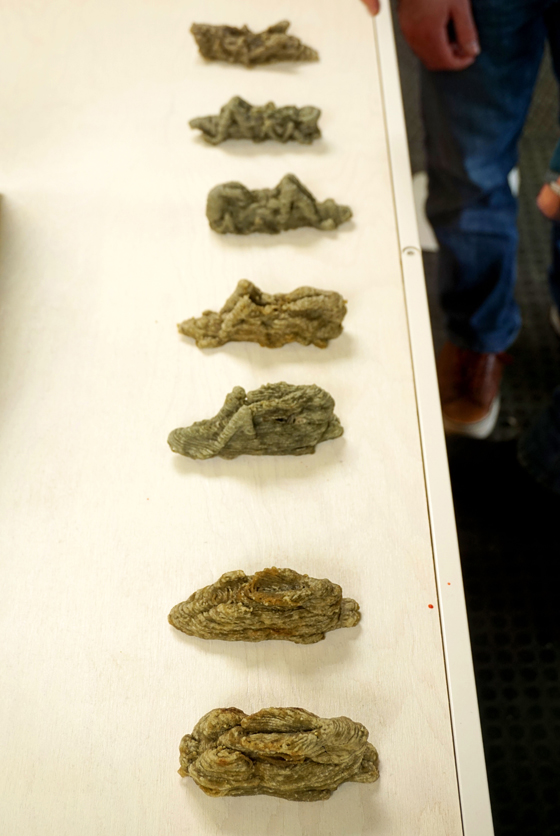Trend Report (III): Milan 2015
Texto por Le Vin Chin
Basel, Suiza
02.12.02
This is the second of a three-part Trend Report from Milan 2015 by Le Vin Chin. Playing with the design of the way we eat has launched many experimental restaurants with unconventional dining experiences over the past few decades.
Probably the most prominent tackling of the topic this year was by the Design Academy Eindhoven, who had created a new design department — “Food Non Food” — specifically to address the growing importance of food design late last year. The department’s Eat Shit! exhibit was a powerhouse exploration of all the various processes of food production, distribution, preparation, presentation, consumption, and, yes, defecation.
Above: “Playing Food” by Tomm Velthuis is a toy farm that, nonetheless, shows the true horror of modern factory farming: “… the set comes complete with 200 pigs, the trees that must be cleared for feed crops, and the acid rain caused by the pigs’ manure.” Middle: Second year student Mathilde Nakken’s baked manifesto. Below: “Pigeon Shit Tower” by Arne Hendriks is both a factory for and a monument to the fertilising value of pigeon shit.
Food production: “Bugs Bunny” by Caroline Schulze addresses the untapped food resource that is insects. By mass, you get nine times more insect meat than beef from the same feedstuff. Only tradition and convention have blocked this avenue of feeding our rapidly growing human population from us. Through 3D printing (with a yummy paste of mealworms) of a morph between rabbit and grasshopper, she attempts to show us how arbitrary our culinary taboos are.
Above: “Planet Mirror” by Boris Design Studio is an eco-mirror integrating self-regulating vertical garden technology by Greenworks. Below: the “Humus and Porcelain Project” from the School of Applied Art, Vevey, Department of Ceramics integrates seeds into the body of the ceramic objects so they sprout by themselves.
Food preparation: at Designjunction, three designers came together to create a pop-up designer bakery featuring innovations in the preparation and baking of bread. Anna Fabrizi’s “Lunigiana Hills” is a stack of plates between which bread can be baked following baking technique. Konstantia Manthou’s “KI-RA” allows the creation of edible containers made of bread. STUDIOLAV’s stamps press decorative textile patterns into bread.
Food presentation: across town, at both the Brand New World Milano 2015 @ Dušan and the Palazzo Serbelloni, Studio Appétit were presenting their “Things of Edible Beauty” exhibit, which found new expressions for the aesthetics of eating and food presentation.



















